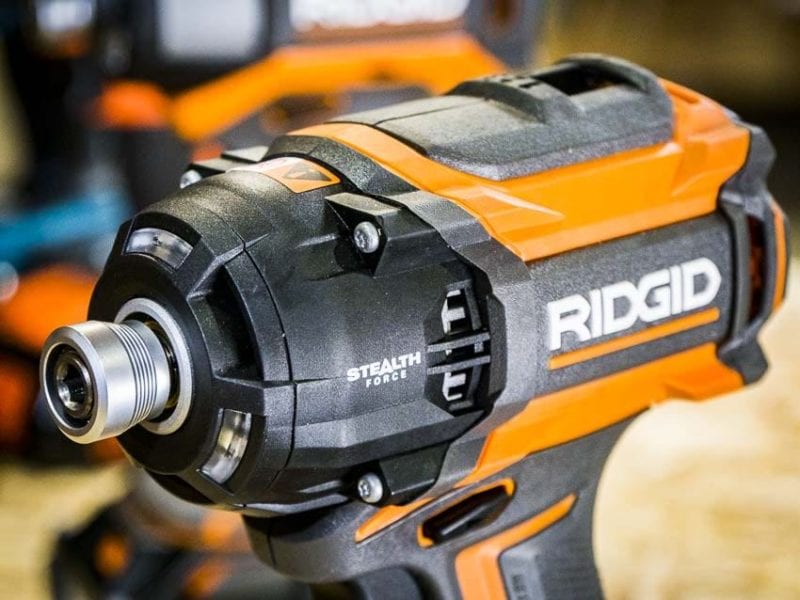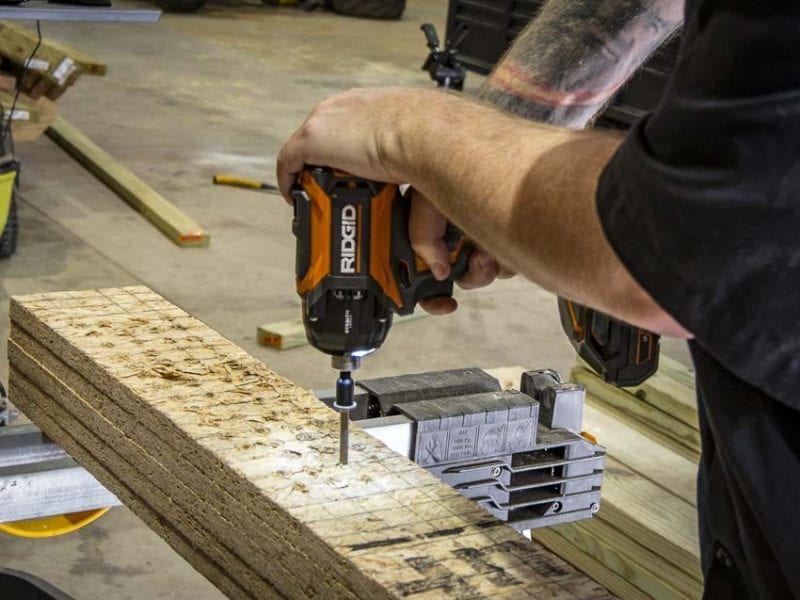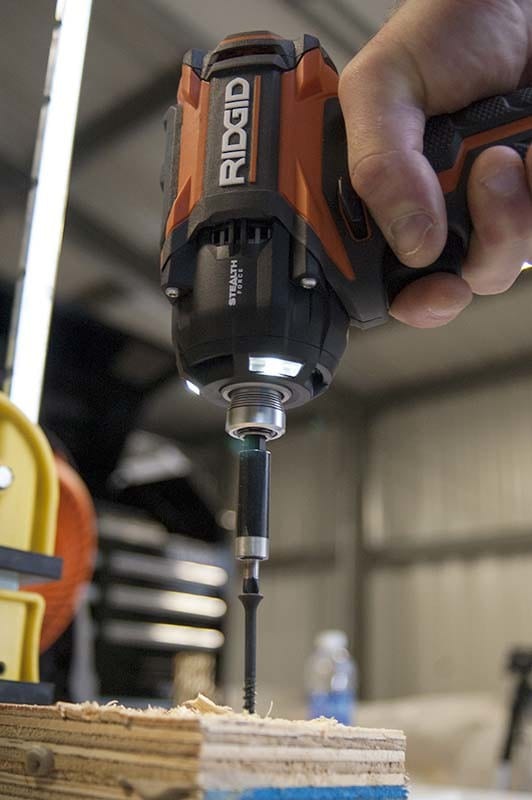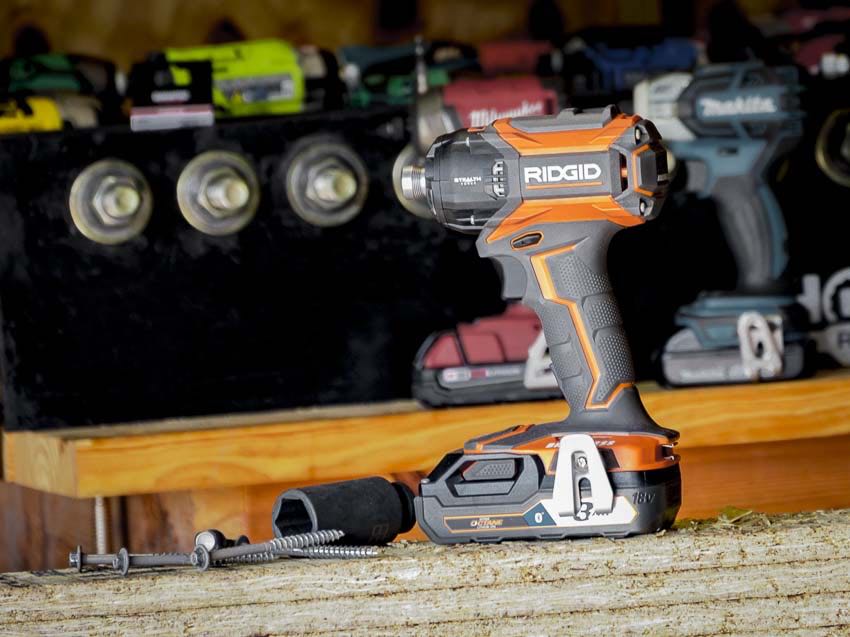Reader Question: Does the an Impact Driver Have Less Power in Reverse than in Forward?
The question of impact driver power has come up a few times. Now that we have some concrete data, it’s time to answer it. So Does an impact driver have less power in reverse than forward? We grabbed the Ridgid Stealth Force pulse driver to find out…and tested several other standard impact drivers as well.
Check out our best hydraulic impact driver and best impact driver articles to see how these tools compare.
Starting with Fastening Torque
In our testing—which doesn’t replace the manufacturer’s specification tests—the Ridgid Stealth Force has 2376 in-lbs of fastening torque and 2880 in-lbs of loosening torque. That’s on hardened steel bolts that have a little grease on them.

It’s Really About the Testing Method
If you checked out our testing methods, there’s a good chance you’ve already spotted the solution. We use the amount of torque it takes to remove a bolt for our fastening measurement and we fasten each bolt to a specific torque to test breakaway.
It takes roughly 80% of the amount of torque to loosen a bolt that it does to fasten it to the same point. So let’s look at those original numbers one more time.
- Fastening Torque: 2376 in-lbs
- Breakaway Torque: 2880 in-lbs
Since it takes an average of 2376 in-lbs to loosen what an impact driver fastened, we can estimate how much actual fastening force it delivered using a proportion.
It comes out to 2979 in-lbs. That’s a 3.4% difference between the loosening and breakaway measurements.
There’s another caveat—that breakaway torque value is a minimum number. It breaks that consistently, but not the next level up (3000 in-lbs). So its actual breakaway force is somewhere between 2880 and 2999 in-lbs.
Given the amount of error in impact testing and that 80% number can fluctuate a few percentage points, it’s close enough to say it’s putting out the same torque in both forward and reverse.
Do Impact Drivers Differ from Oil Impulse Drivers in This?
In a word: Yes.
Looking at our Pro brands, most standard impact drivers show an 8%–25% difference compared to the oil impulse’s 3.4%. The takeaway?
Standard impact drivers actually do seem to hit harder in reverse than in forward. For the amount of fastening torque our oil impulse driver had, it certainly felt underpowered in reverse compared to what we’re used to from standard impact drivers or impact wrenches.

Other Reasons Standard Impact Drivers Feel Different than Oil Impulse Drivers
Differences in Mechanics
Drive screws with any hydraulic impact driver and it’s immediately clear that they don’t hit as hard as standard impact drivers. That’s part of how they keep the noise level down. It’s also the reason their torque values are lower—and often not even listed on the spec sheet.
The hammer/anvil mechanism in our Ridgid Stealth force differed as well. Using a system that’s more elliptical, the hammer slides past the anvil more than striking it out of the way. It’s why the hydraulic impact driver feels more like a hard push and the standard impact driver feels more like a violent punch.

Each manufacturer specs their hammer/anvil mechanisms the way they want and there are certainly some differences between them.
The Stealth Force’s no-load speeds in forward and reverse are within a few RPM on our tachometer. Ridgid’s design simply seems to have a lower fastening to loosening torque ratio.
Differences in Time
Because hydraulic impact drivers hit softer, they need more time to reach their peak torque in both forward and reverse. I did some separate breakaway tests, and it took as long as 8 seconds to effectively break a nut torqued at Ridgid’s peak loosening potential.
The same goes for fastening torque—it takes longer to reach the actual peak.
I mention that because we had to pick a standard amount of time for our testing. In fact, we used two methods to account for impacts that hit hard out of the gate and others that hit softer. So our results aren’t perfect in the hydraulic class, but they do reflect a standardized method so they’re all tested the same way.
The Bottom Line
Does an impact driver have less power in reverse than in forward? The question is rooted in its use as an automotive tool for breaking lug nuts. Unfortunately, these are still impact drivers at heart. An impact wrench is the correct tool for that job.
For the screw fastening jobs an impact driver is designed for, I don’t notice any issues in most oil impulse drivers’ ability to effectively remove the same screws it can fully drive. The torque values we measured in our testing back that up. In the end, the math suggests that it has the same amount of torque in reverse as it does in forward.



